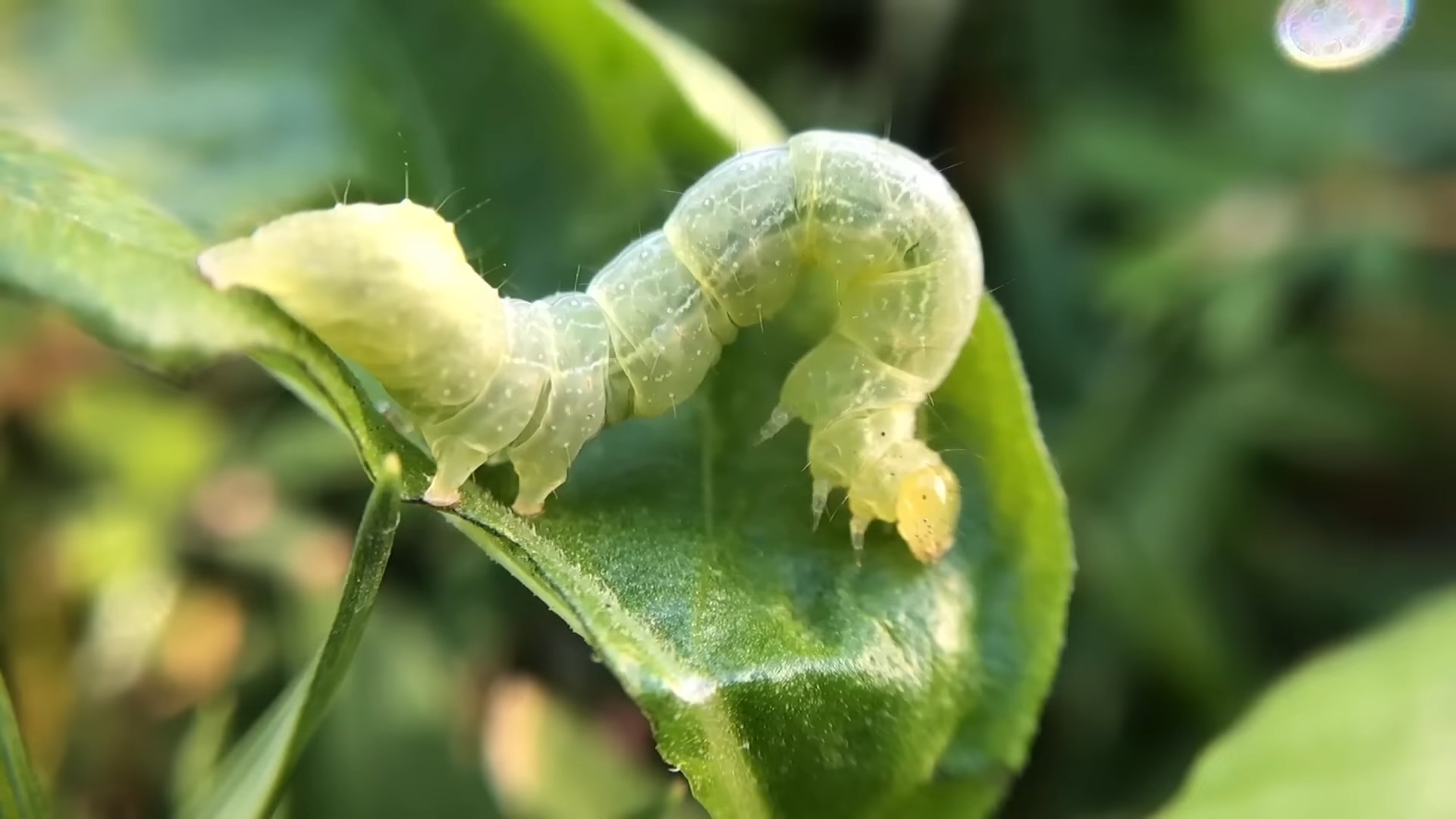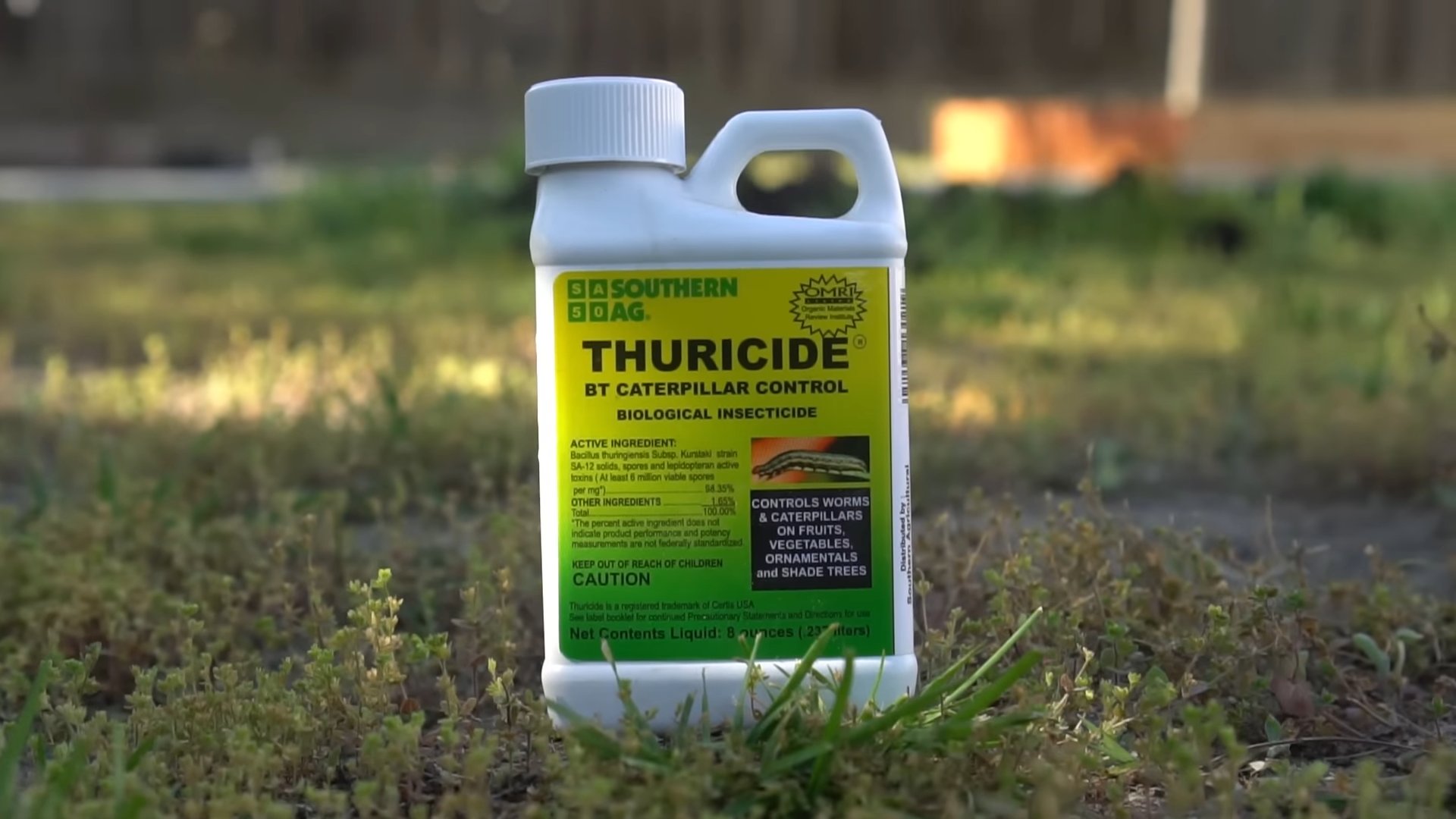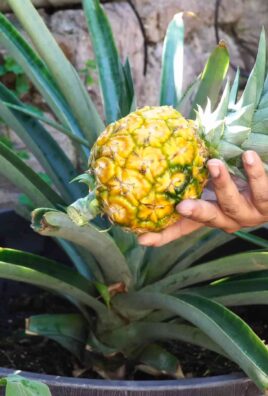Thuricide caterpillar control garden: Are pesky caterpillars turning your dreams of a lush, vibrant garden into a leafy nightmare? I know the feeling! There’s nothing more disheartening than watching your prized plants become a buffet for these hungry critters. But don’t despair, fellow gardeners! You don’t need harsh chemicals to win this battle.
For centuries, gardeners have sought natural and effective ways to protect their crops. From ancient companion planting techniques to modern biological controls, the quest for a healthy, pest-free garden is a timeless pursuit. And that’s where Thuricide comes in. This amazing solution, derived from the naturally occurring bacteria Bacillus thuringiensis (Bt), offers a safe and targeted approach to thuricide caterpillar control garden without harming beneficial insects, pets, or even you!
In this DIY guide, I’m going to share my tried-and-true methods for using Thuricide to keep your garden caterpillar-free. We’ll cover everything from identifying common caterpillar pests to properly applying Thuricide for maximum effectiveness. So, grab your gardening gloves, and let’s get ready to reclaim your garden from those leaf-munching invaders! You’ll be amazed at how easy and rewarding it is to create a thriving, healthy garden using this simple, natural solution.

DIY Thuricide Caterpillar Control: A Gardener’s Guide
Caterpillars can be a real nightmare for any gardener. One minute your prized tomato plants are lush and green, and the next they’re riddled with holes, thanks to these hungry little critters. While there are many ways to deal with them, I’ve found that using Thuricide, a biological insecticide containing Bacillus thuringiensis (Bt), is one of the most effective and environmentally friendly options. It’s safe for beneficial insects, pets, and people when used correctly, and it targets caterpillars specifically. In this guide, I’ll walk you through how to use Thuricide to protect your garden from caterpillar infestations.
Understanding Thuricide and Caterpillars
Before we dive into the how-to, let’s cover some basics.
* **What is Thuricide?** Thuricide is a brand name for products containing *Bacillus thuringiensis* (Bt), a naturally occurring bacterium found in soil. Different strains of Bt target different insects. For caterpillar control, you’ll want a product containing the *kurstaki* strain (Btk).
* **How does it work?** When caterpillars ingest Thuricide, the Bt bacteria produce a protein that paralyzes their digestive system. They stop feeding and eventually die within a few days.
* **Why choose Thuricide?** It’s a selective insecticide, meaning it primarily affects caterpillars and doesn’t harm beneficial insects like bees, ladybugs, or lacewings. It’s also considered safe for humans and pets when used according to the label instructions.
* **What caterpillars does it control?** Thuricide is effective against a wide range of caterpillars, including cabbage loopers, tomato hornworms, armyworms, tent caterpillars, and many others.
* Important Note: Thuricide is most effective on young caterpillars. Larger, more mature caterpillars may be more resistant.
Materials You’ll Need
* Thuricide concentrate (containing *Bacillus thuringiensis* var. *kurstaki*)
* A garden sprayer (handheld or backpack sprayer, depending on the size of your garden)
* Measuring spoons or cups
* Water
* Gloves
* Eye protection (safety glasses or goggles)
* A face mask (optional, but recommended for extra safety)
Step-by-Step Instructions: Applying Thuricide
Here’s a detailed guide on how to properly apply Thuricide to your plants:
1. **Read the Label Carefully:** This is the most important step! Always read and follow the instructions on the Thuricide product label. The label will provide specific information on dilution rates, application frequency, and safety precautions. Different brands may have slightly different instructions, so don’t skip this step.
2. **Prepare the Spray Solution:**
* Determine the Correct Dilution: The label will specify the amount of Thuricide concentrate to mix with water. A common dilution rate is 1-2 teaspoons of Thuricide per gallon of water, but always double-check the label.
* Mix the Solution: In your garden sprayer, add the appropriate amount of Thuricide concentrate to the water. Make sure to mix thoroughly. I usually add the water first, then the Thuricide, and then gently stir with a stick or the sprayer wand to avoid creating excessive foam.
3. **Gear Up for Safety:**
* Protect Yourself: Put on your gloves, eye protection, and face mask. Even though Thuricide is considered safe, it’s always a good idea to protect yourself from potential skin or eye irritation.
4. **Test the Sprayer:**
* Check the Nozzle: Before you start spraying your plants, test the sprayer to make sure the nozzle is working properly and that you’re getting a fine, even spray. Adjust the nozzle as needed.
* Practice Spraying: Practice spraying on a small, inconspicuous area of one of your plants to ensure you’re not applying too much or too little solution.
5. **Apply Thuricide to Your Plants:**
* Spray Thoroughly: Spray all parts of the plant, including the tops and undersides of the leaves, stems, and flowers. Caterpillars often hide on the undersides of leaves, so don’t neglect those areas.
* Coat, Don’t Drench: Aim for a light, even coating of the Thuricide solution. Avoid drenching the plants, as this can wash away the product and potentially harm the plants.
* Target Infested Areas: Pay special attention to areas where you’ve seen caterpillar damage or where you suspect caterpillars are hiding.
* Spray in the Evening or Early Morning: Thuricide is most effective when applied in the evening or early morning when temperatures are cooler and the sun isn’t as intense. This helps prevent the product from drying out too quickly and allows the caterpillars more time to ingest it.
* Avoid Spraying During Rain or Windy Conditions: Rain can wash away the Thuricide, and wind can carry the spray to unintended areas. Choose a calm, dry day for application.
6. **Monitor Your Plants:**
* Check for Results: After a few days, check your plants for signs of caterpillar activity. You should see a decrease in feeding damage and fewer live caterpillars.
* Reapply as Needed: Thuricide breaks down relatively quickly, so you may need to reapply it every 7-10 days, especially after rain or if you see new caterpillar activity. Always follow the label instructions for reapplication intervals.
7. **Clean Up:**
* Rinse the Sprayer: After you’re finished spraying, rinse your garden sprayer thoroughly with clean water to prevent clogging and corrosion.
* Store Thuricide Properly: Store the Thuricide concentrate in a cool, dry place, away from children and pets.
Tips for Maximizing Thuricide’s Effectiveness
* Early Detection is Key: The sooner you detect a caterpillar infestation, the more effective Thuricide will be. Regularly inspect your plants for signs of damage, such as holes in leaves, chewed stems, or caterpillar droppings (frass).
* Identify the Caterpillar: While Thuricide is effective against many types of caterpillars, knowing the specific type can help you tailor your treatment strategy. Some caterpillars may be more resistant than others, or they may have specific feeding habits that require a different application approach.
* Use a Spreader-Sticker: Adding a spreader-sticker to your Thuricide solution can help the product adhere to the plant leaves better, especially on waxy or hairy leaves. This can improve the effectiveness of the treatment and reduce the need for frequent reapplication.
* Rotate Insecticides: To prevent caterpillars from developing resistance to Thuricide, consider rotating it with other types of insecticides, such as insecticidal soap or horticultural oil.
* Consider Companion Planting: Certain plants, such as dill, parsley, and fennel, attract beneficial insects that prey on caterpillars. Planting these alongside your vulnerable plants can help reduce caterpillar populations naturally.
* Handpick Caterpillars: For small infestations, you can handpick caterpillars from your plants and drop them into a bucket of soapy water. This is a simple and effective way to control caterpillars without using any insecticides.
* Use Row Covers: Covering your plants with row covers can prevent moths from laying eggs on them in the first place. This is a great way to protect your plants from caterpillar infestations before they even start.
* Maintain Healthy Plants: Healthy plants are more resistant to pests and diseases. Make sure your plants are getting enough water, nutrients, and sunlight.
Troubleshooting
* Thuricide Doesn’t Seem to Be Working:
* Check the Expiration Date: Thuricide has a shelf life, so make sure your product hasn’t expired.
* Ensure Proper Dilution: Double-check that you’re using the correct dilution rate.
* Reapply After Rain: If it rains shortly after you apply Thuricide, you’ll need to reapply it.
* Target Young Caterpillars: Thuricide is most effective on young caterpillars. If you’re dealing with large, mature caterpillars, you may need to use a stronger insecticide or handpick them.
* Consider Resistance: In rare cases, caterpillars may develop resistance to Thuricide. If you suspect resistance, try rotating with a different type of insecticide.
* Plants are Damaged After Applying Thuricide:
* Over-Application: You may have applied too much Thuricide, which can damage sensitive plants. Make sure to follow the label instructions and avoid drenching the plants.
* Sensitivity: Some plants may be sensitive to Thuricide. Test the product on a small area of the plant before applying it to the entire plant.
* Other Issues: The damage may be caused by something other than Thuricide, such as a disease or nutrient deficiency.
Safety Precautions
* Always wear gloves, eye protection, and a face mask when handling and applying Thuricide.
* Keep Thuricide out of reach of children and pets.
* Avoid spraying

Conclusion
So, there you have it! Mastering the art of DIY Thuricide caterpillar control in your garden is not just a cost-effective solution; it’s a proactive step towards nurturing a thriving, healthy ecosystem right outside your door. We’ve explored the simplicity and effectiveness of creating your own Thuricide spray, empowering you to take charge of protecting your precious plants from those pesky, leaf-munching caterpillars.
Why is this a must-try? Because it works! Store-bought solutions can be expensive and sometimes contain unnecessary additives. Crafting your own Thuricide allows you to control the ingredients, ensuring a targeted and environmentally conscious approach to pest management. You know exactly what’s going into your garden, minimizing the risk of harming beneficial insects or polluting the soil. Plus, the satisfaction of creating something effective with your own hands is incredibly rewarding.
But the benefits don’t stop there. This DIY method is incredibly versatile. Feel free to experiment with variations to suit your specific needs. For instance, if you’re dealing with a particularly stubborn infestation, consider increasing the concentration of Thuricide slightly, always keeping a close eye on your plants for any adverse reactions. You can also add a small amount of horticultural oil to your spray mixture to help the Thuricide adhere better to the leaves, especially during rainy weather. Another variation is to add a small amount of insecticidal soap to the mixture to help with other soft-bodied insects that might be present.
Remember, timing is key. Apply your DIY Thuricide spray in the late afternoon or early evening when caterpillars are most active. This also allows the spray to dry on the leaves before the sun’s rays can degrade the Bacillus thuringiensis (Bt) bacteria. Reapply after rainfall to maintain its effectiveness.
We understand that venturing into DIY pest control can seem daunting at first, but trust us, it’s easier than you think. With a little preparation and attention to detail, you can create a powerful and effective solution that will keep your garden flourishing.
We wholeheartedly encourage you to give this DIY Thuricide caterpillar control method a try. Not only will you save money and protect your plants, but you’ll also gain a deeper understanding of your garden’s ecosystem and how to manage it sustainably.
And most importantly, we want to hear about your experiences! Share your successes, your challenges, and any variations you’ve discovered in the comments below. Your insights will help other gardeners learn and grow, creating a community of informed and empowered plant enthusiasts. Let’s work together to create beautiful, healthy gardens, free from the destructive effects of caterpillars, using the power of DIY Thuricide.
Frequently Asked Questions (FAQ)
What exactly is Thuricide, and how does it work?
Thuricide is a brand name for a biological insecticide that contains Bacillus thuringiensis (Bt), a naturally occurring bacterium found in soil. Bt produces proteins that are toxic to certain insects, particularly caterpillars. When caterpillars ingest Bt, the proteins disrupt their digestive system, causing them to stop feeding and eventually die. It’s a targeted insecticide, meaning it primarily affects caterpillars and has minimal impact on beneficial insects, birds, and mammals when used correctly.
Is DIY Thuricide as effective as store-bought versions?
Yes, when prepared correctly, DIY Thuricide can be just as effective as store-bought versions. The key is to use a high-quality Bt concentrate and follow the instructions carefully. Store-bought Thuricide often contains the same active ingredient (Bacillus thuringiensis) but may also include other additives or inert ingredients. By making your own, you have more control over the ingredients and can ensure a targeted application.
How often should I apply DIY Thuricide to my plants?
The frequency of application depends on the severity of the caterpillar infestation and the weather conditions. Generally, you should apply Thuricide every 7-10 days, or after heavy rainfall, as the rain can wash away the Bt bacteria. Monitor your plants regularly for signs of caterpillar activity and reapply as needed. For severe infestations, you may need to apply it more frequently, perhaps every 3-5 days, until the caterpillar population is under control.
Is DIY Thuricide safe for pets and children?
While Bacillus thuringiensis is considered relatively safe for pets and children, it’s always best to take precautions. Avoid spraying when pets or children are present, and allow the spray to dry completely before allowing them access to the treated area. Although Bt is non-toxic to mammals, ingestion of large quantities could cause mild gastrointestinal upset. Always store Bt concentrate out of reach of children and pets.
Can I use DIY Thuricide on all types of plants?
Yes, DIY Thuricide can be used on a wide variety of plants, including vegetables, fruits, flowers, and ornamental shrubs. However, it’s always a good idea to test a small area of the plant first to ensure there are no adverse reactions. Some plants may be more sensitive to the spray than others. Observe the treated area for 24-48 hours to check for any signs of leaf burn or discoloration before applying it to the entire plant.
What are the best times of day to apply DIY Thuricide?
The best time to apply DIY Thuricide is in the late afternoon or early evening. This is when caterpillars are most active, increasing the likelihood of them ingesting the Bt bacteria. Applying it in the evening also allows the spray to dry on the leaves before the sun’s rays can degrade the Bt, maximizing its effectiveness. Avoid spraying during the hottest part of the day, as the heat can also reduce the efficacy of the Bt.
How long does it take for DIY Thuricide to kill caterpillars?
Caterpillars typically stop feeding within a few hours of ingesting Bt. However, it may take several days for them to die completely. You may notice a reduction in caterpillar activity within 24-48 hours of application. Continue to monitor your plants and reapply as needed until the caterpillar population is under control.
Can I mix DIY Thuricide with other insecticides or fungicides?
It’s generally not recommended to mix DIY Thuricide with other insecticides or fungicides unless you are certain that the products are compatible. Mixing different chemicals can sometimes reduce their effectiveness or even create harmful reactions. If you need to use other pest control products, apply them separately and allow sufficient time for each product to dry before applying the next. Always read and follow the instructions on the product labels carefully.
How should I store leftover DIY Thuricide spray?
Store leftover DIY Thuricide spray in a cool, dark place, away from direct sunlight and heat. It’s best to use the spray within a few days of mixing, as the Bt bacteria can degrade over time. If you need to store it for longer, consider adding a small amount of molasses or sugar to the mixture, as this can help to prolong the viability of the Bt. Always label the container clearly and keep it out of reach of children and pets.
What are some signs that my plants have a caterpillar infestation?
Common signs of a caterpillar infestation include:
* Holes or chewed edges on leaves
* Caterpillar droppings (frass) on leaves or stems
* Silken webs or nests on plants
* Visible caterpillars on leaves, stems, or flowers
* Stunted growth or reduced yields
If you notice any of these signs, inspect your plants carefully for caterpillars and take action promptly to prevent further damage. Early detection and treatment are key to controlling caterpillar infestations effectively.





Leave a Comment